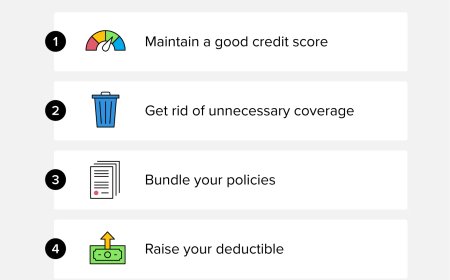Expand Your Vocal Range with Proven Technique: Exercises That Work
Learn how to increase your vocal range with exercises rooted in vocal science. Improve flexibility, control, and strength in every register.

Every voice has a range, but that range isnt fixed. Through technique, repetition, and the right approach, you can safely and gradually expand how high and low you can sing. And no it doesnt require natural talent or years of training. What you do need aresinging exercises to improve range that are both effective and grounded in how the voice actually works.
In this post, well break down the science behind vocal range, explain whats stopping you from hitting certain notes, and give you a practical daily routine to start growing your range without hurting your voice.
Understanding Vocal Range (And What Limits It)
Your vocal range is defined by the highest and lowest pitches you can sing with clarity, control, and healthy technique. Most untrained singers have a usable range of about 1.5 to 2 octaves. With training, that can stretch to 2.53 octaves or more.
What limits range?
-
Tension in the larynx
-
Weak breath support
-
Unbalanced vocal registers (chest, mix, head)
-
Lack of vocal fold flexibility
-
Improper vowel shaping at extreme pitches
When any of these go unaddressed, singers feel stuck at certain notes often cracking, straining, or going breathy when they try to stretch.
The Role of Breath Support and Cord Closure
One of the biggest myths is that singing higher or lower requires more pushing. In reality, it requires coordination not power. Two major skills impact your range development:
1. Breath Support
Your diaphragm, ribs, and core muscles must work together to regulate airflow. Too much air pressure forces the voice; too little creates weak tone. Controlled breath pressure allows the vocal folds to adjust pitch efficiently.
2. Cord Closure
Healthy vocal fold closure ensures clean tone and energy in sound. In higher ranges, cords need to thin and stretch while still staying connected. Exercises that balance this will help you sing higher without strain.
Key Exercises to Improve Vocal Range
Below are five exercises that directly target the muscles and coordination needed to expand your range.
1.Sirens (Pitch Glides)
Purpose: Develop register connection and stretch folds
How to Do It:
-
Use a vowel like oo or ee
-
Slide slowly from your lowest to your highest comfortable pitch
-
Avoid forcing keep volume medium-light
-
Repeat 56 times
Why it works: Encourages fold stretching without pressure, connecting chest to head voice.
2.Lip Trills on 5-Tone Scale
Purpose: Build airflow coordination and pitch ease
How to Do It:
-
Trill your lips while singing C-D-E-F-G (then back down)
-
Start in mid-range, move up by half steps
-
Stay relaxed and keep breath steady
Why it works: Minimizes throat tension and encourages breath-led phonation.
3.Gee Octave Jumps
Purpose: Train high note onset with bright cord closure
How to Do It:
-
Sing gee on a low note, then jump an octave up
-
Keep tone buzzy and forward (not breathy)
-
Focus on smooth, clear top notes
Why it works: Builds cord resistance and teaches balance in registration.
4.Descending Ah Scales
Purpose: Strengthen lower range and tone consistency
How to Do It:
-
Start on a comfortable high note
-
Sing down five steps on a pure ah vowel
-
Maintain open throat and firm support
Why it works: Activates lower register with full vocal fold connection.
5.ChestMixHead Switch Slides
Purpose: Blend vocal registers
How to Do It:
-
Start on ya, sliding from chest voice up into head voice
-
Let the tone change without flipping
-
Keep volume light; aim for smoothness
Why it works: Builds mix voice, smooths passaggi (register breaks).
Range Expansion Weekly Plan (2530 Minutes Per Day)
| Day | Focus | Exercises |
|---|---|---|
| Mon | Mid to High | Lip Trills, Sirens, Octave Jumps |
| Tue | Breath & Support | Sustained Hiss, shh-puff coordination, Descending Scales |
| Wed | Low Range Focus | Ah Scales, Gentle Glides |
| Thu | Register Blending | ChestHead Slides, Sirens |
| Fri | Song Application | Choose a song that challenges your upper or lower range |
| Sat | Flexibility Drills | Sirens, Octave Slides, Step Ladders |
| Sun | Rest or Listen | Passive vocal study (watch tutorials, analyze vocalists) |
Troubleshooting: What If Your Voice Cracks?
Cracking doesnt mean failure it means youre entering a new part of your range that needs strengthening. Try this:
-
Reduce volume
-
Lighten the vowel (try oo instead of ah)
-
Increase breath control
-
Stay consistent and dont push through pain
Range expansion takes patience, not pressure.
Signs Your Range Is Expanding
After 24 weeks of consistent training, youll likely notice:
New notes becoming accessible
Less tension when singing high
Lower notes sounding richer
More dynamic range when singing songs
Improved confidence and tone stability
Final Thoughts: Expand, Dont Explode
Trying to sing outside your range too soon is like trying to do splits on day one it hurts and doesnt help. Instead, stretch a little at a time. The right singing exercises to improve range will develop strength, agility, and control without strain.
So keep your sessions short, focused, and consistent. Your vocal range is a journey, not a race. The progress will come and when it does, the notes you once feared will become the notes you love to sing.



































